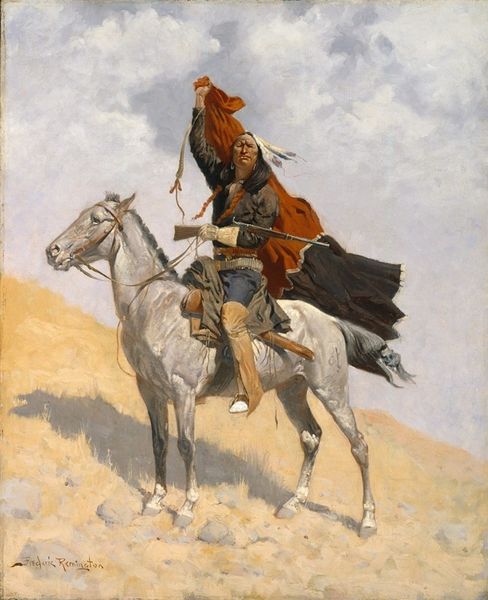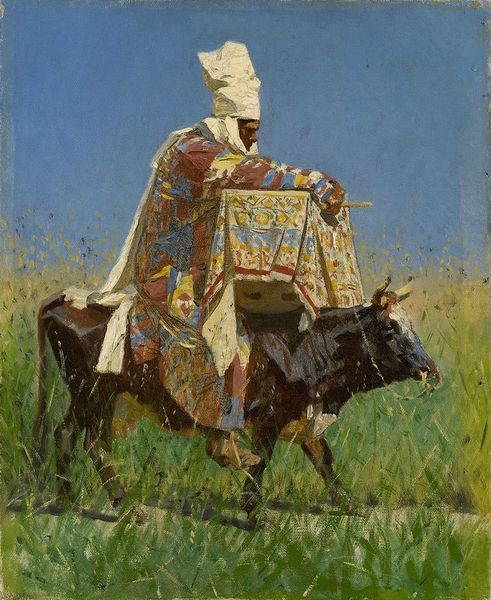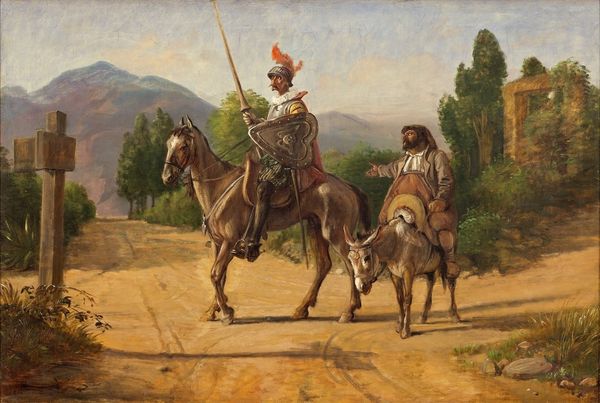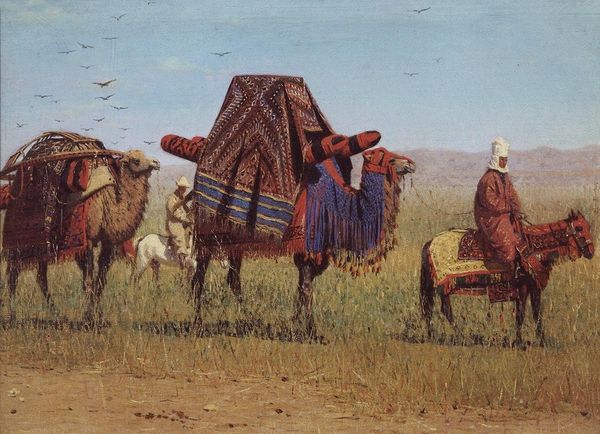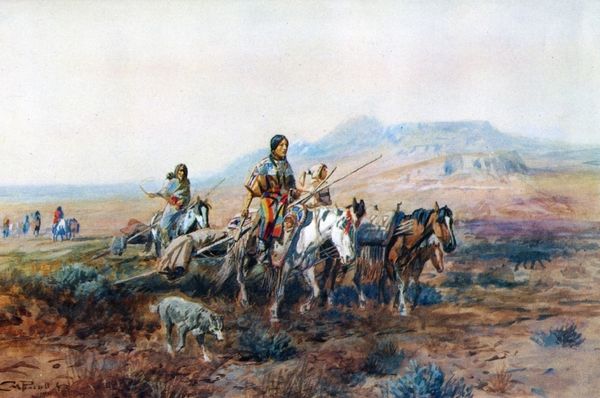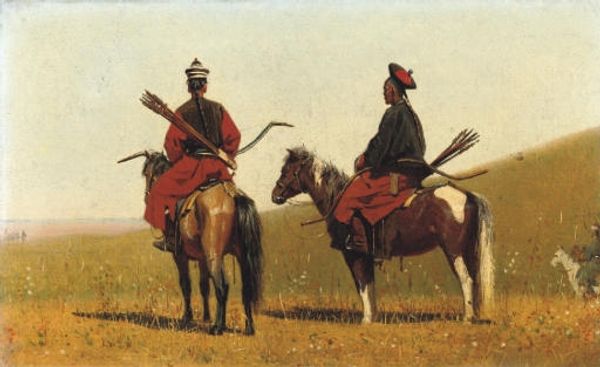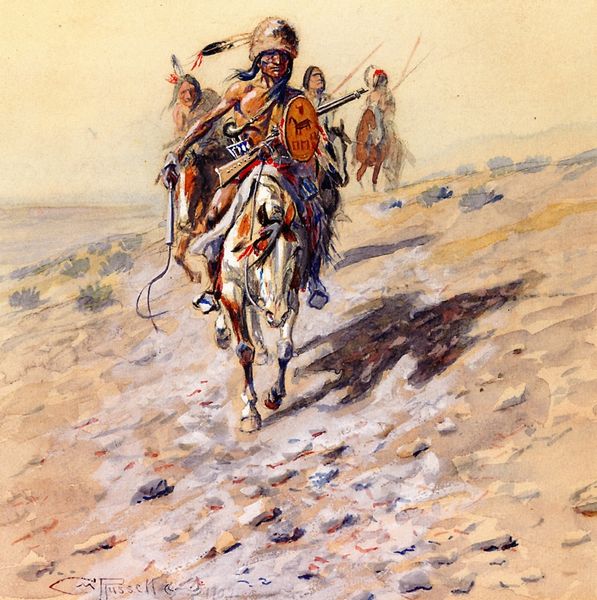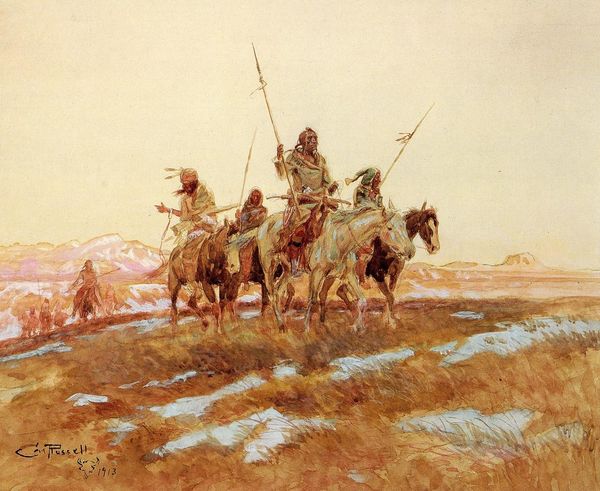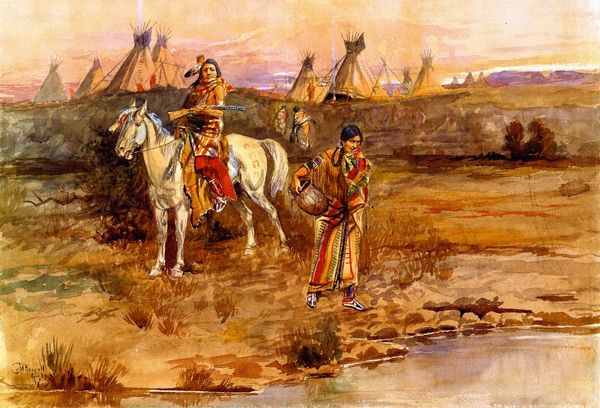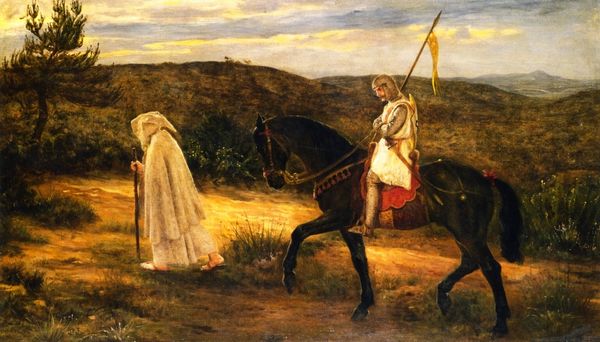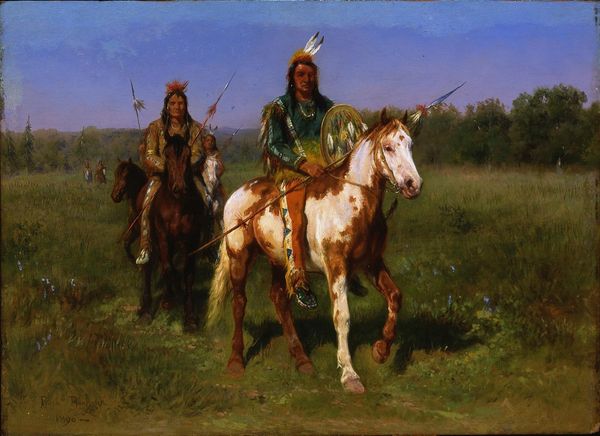
painting, oil-paint
#
portrait
#
animal
#
painting
#
oil-paint
#
landscape
#
figuration
#
oil painting
#
romanticism
#
orientalism
#
horse
#
genre-painting
#
realism
Copyright: Public domain
Gustave Boulanger painted ‘An Arab Horseman’ in the 19th century. Here, the horse acts as a powerful emblem, long associated with nobility and strength. The rider is proud, sat high on the horse, yet his posture is relaxed as he gazes to the left. Consider, though, the enduring image of the mounted figure—recall the equestrian statues of Roman emperors like Marcus Aurelius. We can trace how this motif has been passed down through history, shifting in meaning. Where the Roman emperors were symbols of conquest and the assertion of power, this horseman is part of a lineage connecting man and animal, nobility and freedom. The horse is a symbol deeply embedded in our collective memory. Note the hooded figure standing still on the right: like a shadow, his presence charges the image with a sense of foreboding, of destiny perhaps, in stark contrast with the rider's forward momentum. Such contrast of forward movement and stasis can be found in works throughout history, often tied with the emotional states of hope and despair. These archetypes create a powerful force engaging viewers on a deep, subconscious level. The images resonate with the non-linear, cyclical progression of symbols resurfacing and evolving across different historical contexts.
Comments
No comments
Be the first to comment and join the conversation on the ultimate creative platform.

